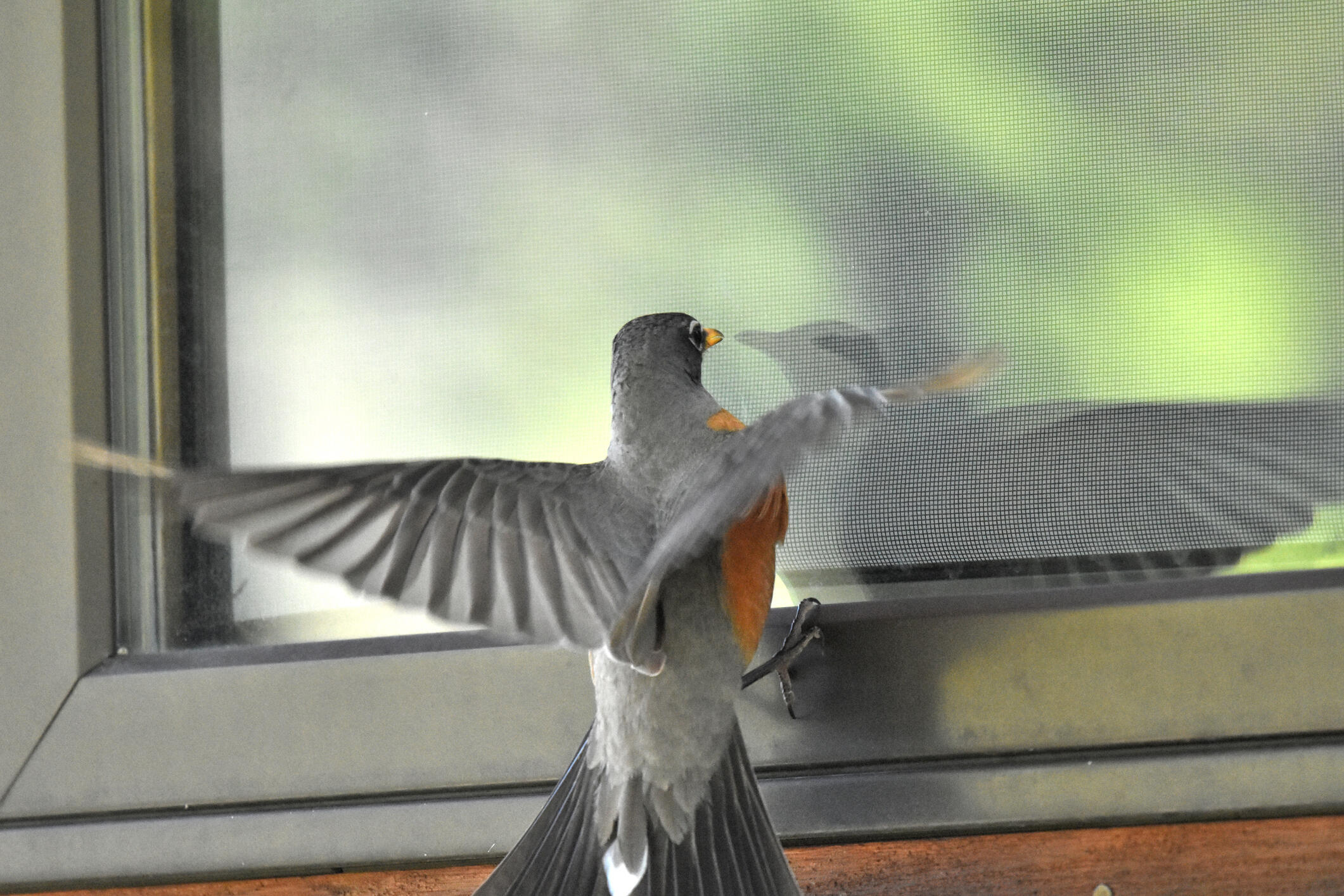
March 18, 2024
Celebrity owl Flaco’s recent death in NYC highlights how bird strikes with buildings are strikingly common, including in Virginia
At VCU, avian ecologist Lesley Bulluck offers a window into how windows and migration are a dangerous mix – and how VCU students are advancing data collection.
Share this story
The recent death of Flaco, a Eurasian eagle owl who escaped from New York City’s famed Central Park Zoo last year, brought new attention to the issue of bird strikes: Experts estimate that roughly a billion birds die in the U.S. every year in collisions with buildings and skyscrapers. At Virginia Commonwealth University’s Center for Environmental Studies, which is part of VCU Life Sciences, we asked avian ecologist and associate professor Lesley Bulluck, Ph.D., for some insight – and some Virginia connections, including how the VCU campus and students are participating in research.
We tend to think about birds as they fly, as opposed to where they live. Tell us about how bird habitats and migration intersect with bird strikes.
There are about 1,100 species of birds that live in North America, and each of them has a set of habitat characteristics that they prefer – some need shrubby wetlands, some mature forests, some grasslands, and some prefer to live in suburbs and cities. When birds migrate between their breeding and nonbreeding areas, they often stop over and refuel in areas that are not necessarily their preferred habitats. The majority of bird strikes occur during these migratory periods (especially in the fall), when a variety of conditions bring them into contact with human structures. Birds that migrate at night can be attracted to and disoriented by artificial lights. During early morning hours, birds are exhausted from a night of flying hundreds or thousands of miles and fly around our human-dominated landscapes feeding on insects and fruits to fuel the rest of their migratory journey.
We first connect bird strikes to skyscraper-laden places like New York and Chicago, but what about in cities and suburbs in Virginia (and elsewhere)?
There are no studies that have directly assessed how BWCs – bird-window collisions — vary across Virginia’s cities and suburbs. Research done in other places has shown that while a single skyscraper can cause large numbers of birds to die in one night, skyscrapers actually are responsible for fewer BWC-related fatalities than smaller buildings. Specifically, due to their relative scarcity compared with residential and small buildings (shorter than four stories) and low-rise buildings (from four to 11 stories), skyscrapers actually make up a smaller portion of BWCs.
Indeed, many of us have heard the thump of a bird hitting a house or apartment window. What actually causes this?
Window glass can act just like a mirror, reflecting back images of the sky and trees and other vegetation. Birds perceive this as more habitat and places to forage for food. Also, birds that migrate at night can be attracted to and disoriented by artificial lights.
How is science and research advancing our understanding of bird strikes?
Local projects, typically on university campuses, have been the origin of much important data on BWCs, as well as a great opportunity to engage students, faculty and staff about a conservation issue on their campuses.
Since 2020, VCU students have volunteered their time to walk the perimeter of campus buildings every day during fall migration and document BWCs. We have encountered over 106 collisions during this period – around 26 each fall semester. Considering we only survey the facades of 11 out of the 137 buildings on the Monroe Park Campus (and none of 61 buildings on the MCV Campus), this is likely a substantial underestimate of the true impact VCU’s windows have on birds. If the subset of area we survey is representative of the larger campus, the real toll is likely over 460 birds each fall migration. In 2023, Dan-Albrecht Malinger, instructor in the Center for Environmental Studies, took over the student volunteer effort and is mentoring a student to map the BWC over time.
Citizen-science data collection about BWCs has led to more data than is possible to collect by any one project/scientist. Only with these sorts of data can we understand broad trends in where collisions are most likely to occur and the weather conditions most associated with collisions. There are several projects on the citizen-science application iNaturalist that aggregate BWC observations; you can find our 2023 data on the RVA Bird/Window Collision iNaturalist Project.
Smaller-scale, experimental work also is helping determine which strategies are most effective at reducing the likelihood of collisions. Adding modifications to new and existing buildings can interrupt the reflection of sky and vegetation and significantly reduce BWCs. Turning out even a portion of lights in a city during peak migration can reduce collisions by more than 60%. The intensity of bird migration can also be tracked using radar-based data and used to generate lights-out notifications on certain high-intensity nights/weeks.
Is there something else we should know or consider with respect to bird strikes or Virginia’s avian population?
Lights Out campaigns are now in place in many major cities throughout North America, but no cities in Virginia are currently participating. In addition to being a relatively simple way to reduce the rate of BWCs in our cities, it is also environmentally and fiscally responsible as it consumes less energy and, therefore, costs less money.
Subscribe to VCU News
Subscribe to VCU News at newsletter.vcu.edu and receive a selection of stories, videos, photos, news clips and event listings in your inbox.










